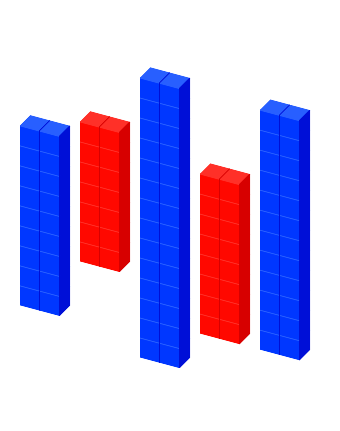How to Interpret Prop Firm Evaluation Metrics and Feedback

Understanding prop firm evaluation can be tough for traders. These metrics offer key insights into trading strategies and risk management. They help traders succeed in the competitive financial world.
Prop firm feedback is more than just profit and loss. It looks at trading behavior, risk tolerance, and decision-making. Traders who get this feedback right have a big edge in improving their skills.
Getting the most out of prop firm evaluations needs a smart approach. Traders must learn to understand complex metrics and adapt their strategies. This article will guide you through the world of prop trading assessments.
Key Takeaways
- Prop firm evaluations provide critical insights into trading performance
- Metrics go beyond simple profit calculations
- Strategic interpretation of feedback is crucial for trader development
- Risk management plays a central role in evaluation metrics
- Continuous learning is essential for trading success
Understanding the Basics of Prop Firm Evaluations
Prop trading firms use advanced methods to find and grow talented traders. These evaluations look beyond just making money. They check a trader’s skills, how they manage risk, and their performance in the market.
Prop firm models offer clear paths for traders to show their skills. They must pass through detailed evaluations. These tests check their strategic thinking and how well they adapt to the market.
Key Components of Trading Evaluations
Good prop firm assessments focus on a few key areas:
- Consistent profit generation
- Risk management effectiveness
- Trading discipline
- Market understanding
Common Evaluation Models Used by Prop Firms
| Evaluation Model | Primary Focus | Duration |
|---|---|---|
| Challenge Model | Profit Target Achievement | 30-60 Days |
| Verification Phase | Risk Management | 60 Days |
| Scaling Plan | Consistent Performance | Ongoing |
Essential Terminology in Prop Trading Assessment
It’s important for traders to know the terms used in prop firm evaluations. Key terms include drawdown limits, profit targets, and risk-to-reward ratios.
“Success in prop trading requires mastering both technical skills and psychological resilience.” – Professional Trading Mentor
Traders need to show more than just financial knowledge. They must have a deep understanding of the market. The best traders combine analytical skills with flexible trading strategies.
Key Performance Indicators (KPIs) in Prop Trading
Prop trading KPIs are key metrics that show how well a trader does in financial markets. They give a full picture of trading strategies. This helps prop firms see how good a trader is and how well they manage risk.
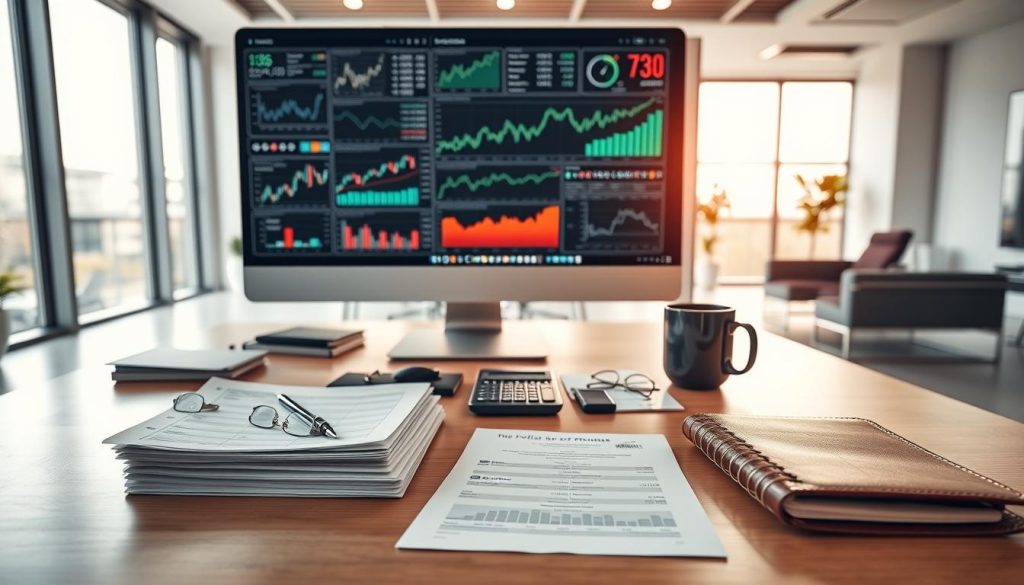
Trading indicators are very important for checking how a trader does. Good prop traders know how to use these metrics well. They show their knowledge of the market.
- Win Rate: Percentage of profitable trades
- Profit Factor: Total gains divided by total losses
- Risk-to-Reward Ratio: Potential profit compared to potential loss
- Maximum Drawdown: Largest portfolio decline from peak to trough
Professional prop trading firms use these KPIs to find and choose the best traders. They look for traders who can make money and manage risk well.
| KPI | Ideal Range | Significance |
|---|---|---|
| Win Rate | 50-65% | Demonstrates consistent trading strategy |
| Profit Factor | 1.5-3.0 | Indicates sustainable trading approach |
| Risk-to-Reward | 1:2 or higher | Shows disciplined risk management |
“In prop trading, your performance metrics tell a story beyond just numbers—they reveal your trading psychology and market understanding.” – Professional Trading Mentor
Traders need to keep an eye on and better their prop trading KPIs all the time. Looking at performance metrics often helps find what’s good and what needs work. This helps improve trading strategies.
Daily Loss Limits and Maximum Drawdown Analysis
Risk management is key to success in prop trading. Traders need to know about daily loss limits and maximum drawdown. These tools help protect their money and keep performance steady.
Prop firms have strict rules to keep traders in check. These rules focus on two main areas: daily loss limits and maximum drawdown.
Calculating Daily Loss Thresholds
Daily loss limits act as shields against big financial losses. They are set using different methods, like:
- Account balance percentage method
- Fixed dollar amount approach
- Volatility-adjusted loss limits
Managing Drawdown Effectively
Maximum drawdown is the biggest drop from a trading account’s peak. Managing this drop well needs careful planning and discipline.
| Drawdown Type | Risk Level | Management Strategy |
|---|---|---|
| Moderate (5-10%) | Low | Continue trading with minor adjustments |
| Significant (10-20%) | Medium | Reduce position sizes, reassess strategy |
| Critical (20%+) | High | Pause trading, comprehensive strategy review |
Recovery Strategies After Losses
Getting back from trading losses needs a plan. Traders should stay calm and make decisions based on data.
“Losses are tuition fees in the university of trading. Learn from them, but never let them define you.” – Professional Trader
Important steps for recovery include resetting mentally, rebalancing the portfolio, and slowly getting back into trading with less risk.
How to Interpret Prop Firm Evaluation Metrics and Feedback
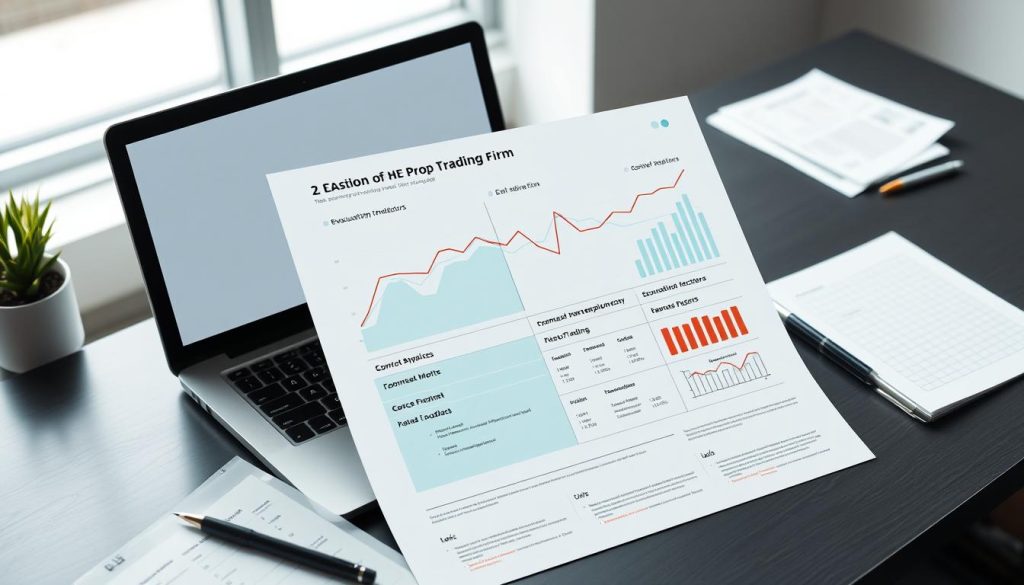
Understanding prop firm evaluation metrics is key. Traders need to be good at analyzing feedback to grow. This skill is crucial in competitive trading.
“Success in prop trading hinges on your ability to transform evaluation data into actionable insights.”
Effective performance assessment involves several steps:
- Analyze quantitative trading metrics objectively
- Recognize patterns in your trading behavior
- Identify specific strengths and weaknesses
- Develop targeted improvement strategies
Prop firm evaluation metrics cover many aspects of trading. Traders should focus on:
- Profit/Loss Ratios: Understand your overall financial performance
- Risk Management: Assess how effectively you control potential losses
- Consistency: Evaluate trading stability across different market conditions
Key areas to focus on include risk management, trade execution, and psychological discipline. Professional traders use feedback to improve. They see each assessment as a chance to grow.
By using a systematic approach to performance assessment, traders can gain deeper insights. This helps them grow faster in prop trading environments.
Risk-to-Reward Ratios and Position Sizing
Successful prop trading relies on smart risk management. It protects your capital and aims for big profits. Knowing how to balance risk and reward is key for steady success.

Prop firms look at how well traders manage risk. The risk-reward ratio is a big deal. It shows who can keep making money and who can’t.
Optimal Position Size Calculation
Position sizing is about how much money you put into each trade. You need to think about a few things:
- Account balance
- Market volatility
- Trade risk
- How much risk you can handle
“Risk management is not about avoiding risk, but about understanding and controlling it.” – Professional Trading Perspective
Risk Management Techniques
Good risk management means protecting your trading money:
- Never risk more than 1-2% of your total account per trade
- Use stop-loss orders to cap losses
- Spread your trading across different strategies
- Keep checking and tweaking your risk levels
Traders who manage risk well are more likely to pass evaluations and get long-term trading chances.
Trading Consistency and Profit Targets
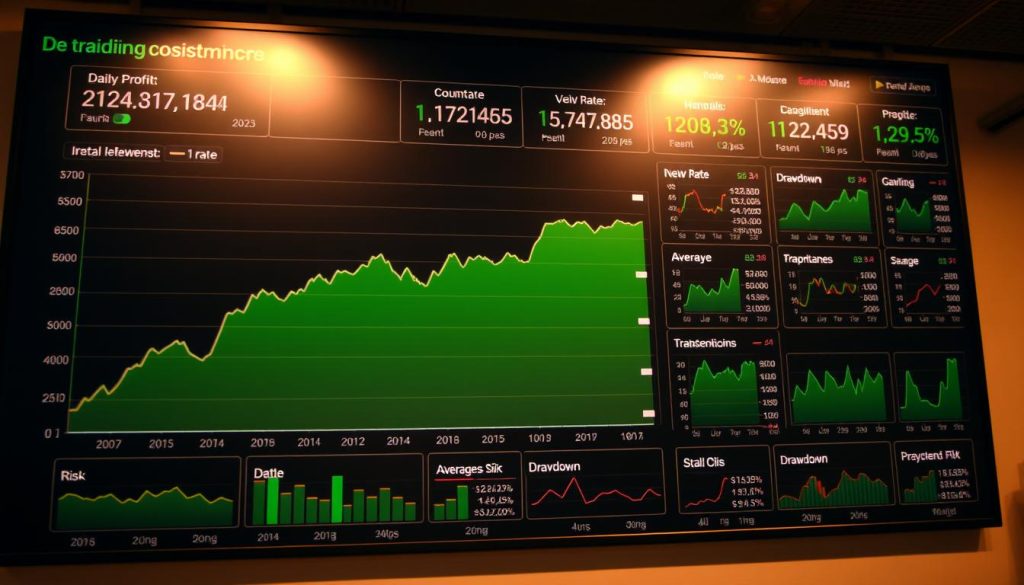
Prop trading firms really value trading consistency. It shows a trader’s skill in making steady profits and managing risks well.
“Consistency is not about being perfect, but about maintaining a strategic approach to trading performance.”
To hit profit targets, traders need a solid plan. This plan should balance risks and rewards. Keeping performance stable is key to lasting success in trading.
- Establish clear trading rules
- Track performance metrics regularly
- Maintain emotional discipline
- Adapt strategies based on data insights
Profit targets need a careful look. Prop firms check if traders can:
| Performance Metric | Evaluation Criteria | Target Range |
|---|---|---|
| Consistency Ratio | Steady Return Generation | 5-10% Monthly |
| Risk Management | Controlled Drawdown | Less than 5% Total |
| Profit Target | Predictable Returns | 8-12% Quarterly |
Good traders know trading consistency is about steady, reliable results. By aiming for performance stability and smart strategy, they show prop firms their worth.
Time-Based Performance Analysis
Prop trading evaluations focus on time-based analysis to check a trader’s skill and consistency. Looking at trading patterns in different time frames helps understand a trader’s strategy and risk handling.

Good performance reviews look at many sides of trading behavior. They break down a trader’s actions into specific time periods. Traders need to show they can perform well over different time scales.
Daily Trading Patterns
Daily trading patterns show important info about a trader’s discipline and strategy. Key parts of daily analysis include:
- Consistency in trade entry and exit points
- Following set trading strategies
- Managing risk in volatile markets
- Keeping emotions in check and making decisions
Monthly Performance Reviews
Monthly reviews give a wider view of a trader’s skills. These detailed checks help prop firms see:
- Long-term trading consistency
- Ability to adjust to market changes
- Keeping profits up and managing risk
| Performance Metric | Daily Analysis | Monthly Review |
|---|---|---|
| Win Rate | Short-term signs | Confirming trends |
| Risk Management | Looking at each trade | Assessing total risk |
| Profit Potential | Examining each trade | Tracking overall performance |
“Trading success is not about individual moments, but consistent performance across time.” – Professional Trading Analyst
Prop firms use advanced time-based analysis to judge traders’ potential. By studying trading patterns and doing thorough reviews, they find traders with top skills and strategy.
Understanding Trading Psychology Metrics

Trading psychology is key to doing well in prop trading. It’s not just about numbers. It’s about how traders handle their emotions and stay strong mentally.
Prop firms use special tests to check a trader’s mind. They look at important traits that affect how traders make choices:
- Emotional stability under market pressure
- Ability to manage fear and greed
- Rational decision-making during volatile conditions
- Consistent risk management approach
“Success in trading is 10% strategy and 90% psychology” – Professional Trading Mentor
Traders need strong emotional control to deal with the markets. Important psychological metrics include:
- Stress response patterns
- Decision-making consistency
- Resilience after trading losses
- Ability to follow predefined trading plans
Advanced tests help prop firms find traders with great mental skills. Trading psychology isn’t about eliminating emotions, but managing them effectively. Good traders know how to handle their emotions and avoid bad decisions.
Prop trading firms now see that skills alone aren’t enough. They also value emotional smarts and the ability to adapt mentally. These are key to a trader’s success.
Technical Analysis in Evaluation Reports
Prop firms dive deep into traders’ technical analysis skills. They look at chart patterns and trading indicators. This shows if traders know the market well.
Prop trading firms check technical analysis in many ways. Traders need to show they can read the market well. It’s not just about tracking prices.
Chart Pattern Recognition
Recognizing chart patterns is key in technical analysis. Good traders spot important visual signals like:
- Head and shoulders patterns
- Double top and bottom formations
- Triangle and wedge configurations
- Support and resistance levels
“Mastering chart patterns is like learning a universal market language” – Professional Trader
Indicator Performance Assessment
Trading indicators are crucial in evaluations. Prop firms see how traders use them to make smart choices. They look at:
- Moving average precision
- Relative strength index (RSI) interpretation
- Stochastic oscillator effectiveness
- Consistency in indicator application
Traders who use multiple indicators wisely get better scores. It’s not just about seeing patterns. It’s about knowing what they mean in real markets.
Trade Execution Quality Metrics
Prop trading firms carefully check how well traders execute trades. This is key to measuring a trader’s skill. Trade execution is about how well and fast traders buy and sell. Knowing how to manage orders well can greatly help a trader succeed.
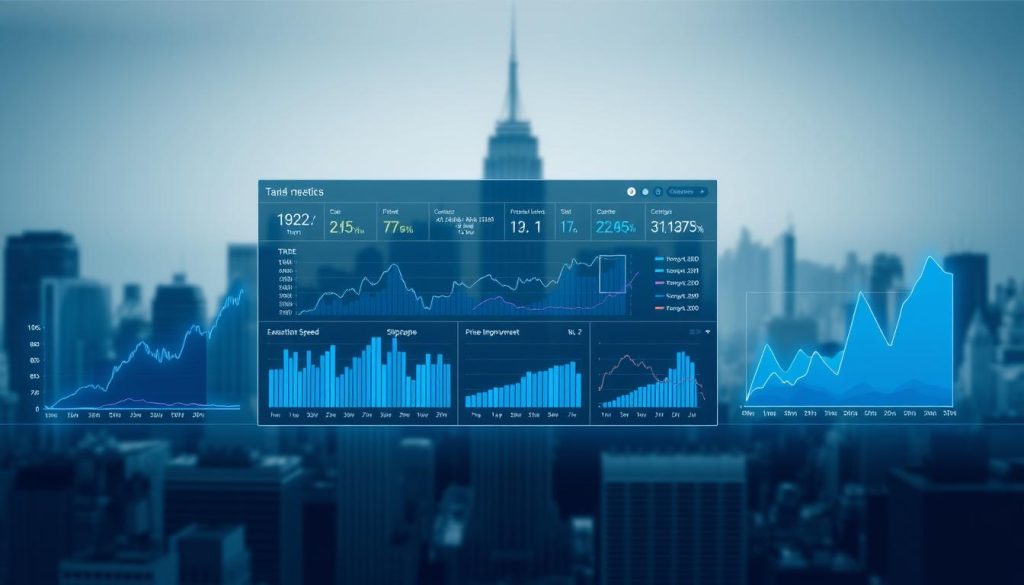
- Fill rate accuracy
- Order execution speed
- Slippage analysis
- Market impact assessment
Slippage analysis is very important in judging trade execution quality. Traders aim to keep the price of trades close to what they expected. Good order management can lower slippage and boost trading results.
“Precision in trade execution separates professional traders from amateurs.” – Professional Trading Insights
Prop firms use detailed metrics to check traders’ skills. They look at many aspects of trading, including:
| Metric | Performance Criteria | Weight in Assessment |
|---|---|---|
| Fill Rate | Percentage of orders successfully executed | 30% |
| Execution Speed | Time between order placement and execution | 25% |
| Slippage Control | Minimal price deviation from expected trade | 25% |
| Market Impact | Trading efficiency without significant market disruption | 20% |
To get better at trade execution, traders need strong strategies and the right tools. They should also keep working on their order management. Being disciplined and keeping slippage low are key to doing well in prop trading.
Leverage and Margin Usage Assessment
Prop trading is complex, needing a good grasp of leverage and margin. Traders must learn these skills well. This shows they can handle risks and manage money wisely.
Leverage can boost returns but also increase losses. Skilled traders find a balance. They use leverage to make the most of market chances while keeping their capital safe.
Safe Leverage Practices
Safe leverage practices include several important steps:
- Keep a low leverage ratio (usually 1:2 or 1:3)
- Always figure out the risk before trading
- Use stop-loss orders to cap losses
- Keep an eye on your account’s leverage
“Successful trading is not about maximizing leverage, but about managing risk effectively.” – Professional Trading Mentor
Margin Call Prevention Strategies
Prop firms check how well traders manage margin and prevent margin calls. Good risk control means:
- Having enough account equity
- Knowing margin needs
- Avoiding too much leverage
- Having a solid risk plan
Traders who use leverage and manage margin well are more likely to do well in prop firm evaluations.
Portfolio Diversification Analysis
Prop firms focus a lot on portfolio diversification as a key risk management tool. Traders who show smart risk distribution strategies are highly valued. Portfolio diversification is more than just spreading investments across different assets.
“Diversification is the only free lunch in investing.” – Harry Markowitz
Successful traders know that good asset allocation needs careful planning. They aim to make a balanced portfolio. This portfolio should reduce losses and increase gains.
- Diversify across different asset classes
- Explore multiple trading strategies
- Consider geographical market variations
- Implement risk management techniques
Prop firms look at a trader’s diversification approach through several important metrics:
- Correlation between traded assets
- Risk-adjusted performance
- Volatility management
- Consistency of trading results
Traders can improve their diversification by:
- Reducing concentration risk
- Balancing high-risk and low-risk investments
- Continuously monitoring market dynamics
- Adapting strategies based on performance data
By mastering portfolio diversification, traders show they are skilled in managing risks. Prop firms highly value this skill. The goal is to have a flexible, strong trading approach that can handle market changes.
Common Evaluation Mistakes and How to Avoid Them
Prop firm evaluations can be tough for traders. There are many pitfalls that can hurt performance. It’s key to know about these mistakes and how to trade well.
Traders often make big errors that hurt their chances of getting better. Spotting these mistakes early can greatly improve how they do in evaluations.
Critical Red Flags in Trading Behavior
- Emotional decision-making during volatile market conditions
- Inconsistent risk management approaches
- Failure to follow predefined trading plans
- Overtrading or revenge trading after losses
“The most dangerous mistakes are the ones you don’t recognize” – Professional Trading Mentor
Performance Improvement Strategies
- Develop a structured trading journal to track mistakes
- Implement strict risk management protocols
- Practice disciplined emotional control
- Regularly review and analyze trading performance
Many mistakes come from psychological barriers. Traders need to be self-aware and open to learning. Continuous learning and adaptability are key to successful prop firm evaluations.
By knowing common mistakes and using the right strategies, traders can do better in prop firm evaluations.
Conclusion
Prop trading is complex and needs a smart approach to master evaluation. It’s not just about tracking numbers. It’s about understanding your trading skills and where you can grow. Traders who succeed keep learning and improving.
Traders use evaluations to get better at their craft. They look at performance, risk, and mindset to learn from their results. Each detail helps them improve and make better strategies.
Evaluations in prop trading are ongoing and require constant effort and curiosity. Those who focus on getting better will do well. They see each review as a chance to grow and improve.
The prop trading world is always changing, and staying up-to-date is key. Traders need to be open to new methods and tech. By using deep analysis and a growth mindset, they can turn feedback into success.
FAQ
What are the most important Key Performance Indicators (KPIs) in prop trading evaluations?
Important KPIs include win rate, average win/loss ratio, Sharpe ratio, and profit factor. These metrics show a trader’s consistency and risk management. They also show how well a trader performs in different market conditions.
How do prop firms calculate daily loss limits?
Daily loss limits are a percentage of the trading account balance, usually 1% to 5%. These limits protect both the trader and the firm from big losses. They ensure risk is managed well.
What is maximum drawdown, and why is it important?
Maximum drawdown is the biggest drop in a trader’s account before a new peak. It shows a trader’s risk management and ability to bounce back. This is key for prop firms.
How do prop firms assess trading psychology?
Prop firms check trading psychology through metrics like trade consistency and emotional control. They look at how well traders make decisions under pressure and stick to their plans. They want traders who stay disciplined and make smart choices.
What role does technical analysis play in prop firm evaluations?
Technical analysis is very important. Prop firms check if traders can spot chart patterns and use indicators well. They value traders who can read market trends and use different indicators.
How important is trade execution quality in prop trading?
Trade execution quality is very important. Prop firms look at fill rate, execution speed, and slippage. Good order management and low slippage show a trader’s skill in the market.
What strategies can help improve my prop firm evaluation performance?
To improve, maintain consistent risk management and have a solid trading plan. Control your emotions and size positions wisely. Diversify your portfolio and keep improving based on feedback.
How do prop firms assess leverage and margin usage?
Prop firms check how well traders use leverage and manage margins. They look for responsible usage and avoiding margin calls. They prefer traders who use leverage wisely and understand its risks.
What are common red flags in prop trading evaluations?
Red flags include overtrading, inconsistent risk management, and frequent big losses. Also, revenge trading, not following a plan, and emotional decision-making are bad signs.
How important is portfolio diversification in prop trading?
Portfolio diversification is very important. Prop firms look for traders who spread risk across different assets and strategies. A diversified portfolio shows smart risk management and potential for steady performance.
Prepare for a prop firm evaluation
